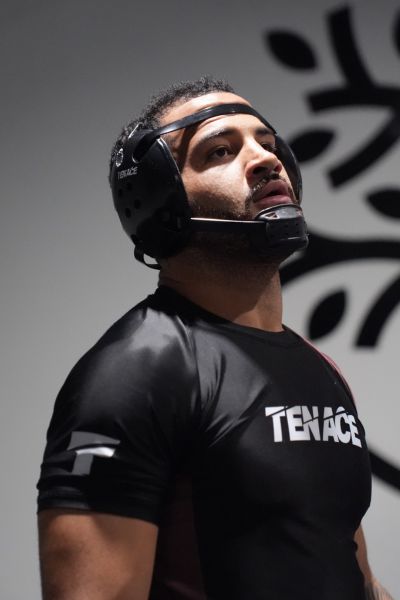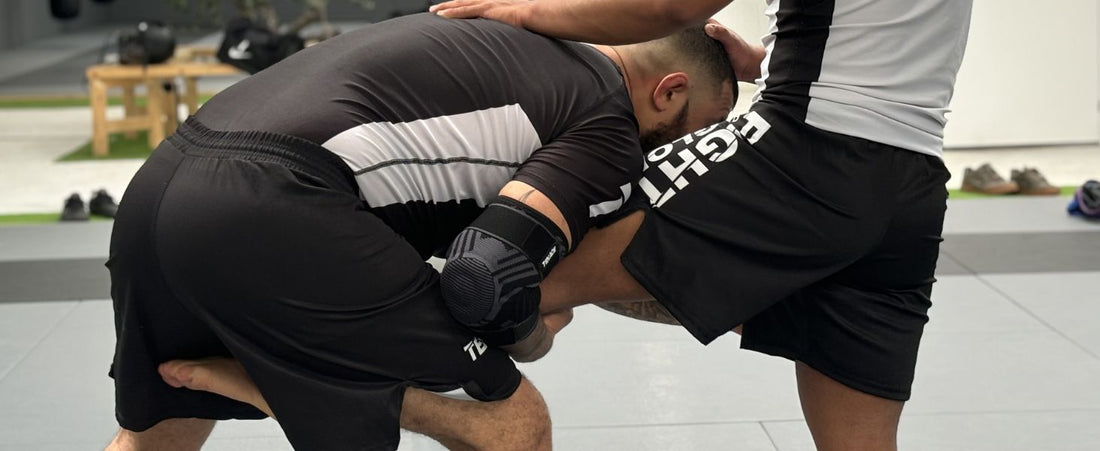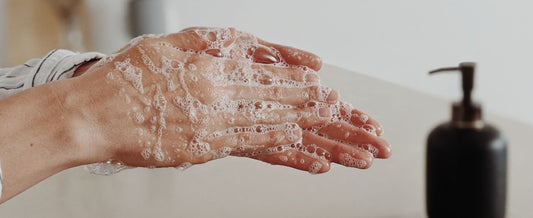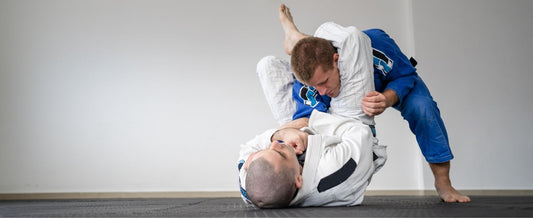- Introduction: The elbow, the grappler's forgotten joint
- Why is it so important to protect your elbows?
- What happens if you don't protect them?
- When should you start wearing elbow pads?
- If you're a beginner: Do you need elbow pads now?
- If you are a veteran: Using protection is not weakness, it is intelligence
- Real benefits of using elbow pads on a daily basis
- What should good elbow pads for BJJ and Grappling have?
- Positions where the elbow suffers the most (and you didn't know it)
- Who are these elbow pads for?
- We want to hear your experience
1. The elbow, the grappler's forgotten joint
When we talk about BJJ, grappling, or any contact martial art, we often focus on the kimono, rash guards, or mouthguard. But there's one area that suffers tremendously on a daily basis and that we rarely protect as we should: the elbow .
Whether you're a beginner or have been training for years, your elbows endure it all : falls, pressure, drags, scrapes against the mat, and explosive movements that can result in micro-injuries that, if left untreated, become chronic discomfort. Today we want to talk to you about the fundamental role of elbow braces in injury prevention , and why you should start using them as soon as possible.
2. It is important to protect your elbows, why?
The elbow is a joint that connects the arm to the forearm and allows for many of the essential actions in grappling: pulling, pushing, blocking, stabilizing, attacking and defending .
In sports like BJJ and No-Gi Grappling, where leverage and body control are key, the elbows receive a brutal and constant load.
And not only that: it's a joint that's used extensively in your daily life. If it's injured, it not only affects your performance, but also your ability to work, drive, carry weight, or even write.
3. What happens if you don't protect them?
- Constant friction against the tatami
→ Causes scrapes, burns and irritation. - Bumps and falls
→ They can cause bursitis, internal inflammation or even microfractures. - Bad posture and poor technique
→ Joint pain, tendonitis and accumulated wear and tear.
- Repetition overload
→ Chronic soft tissue fatigue and injuries that can become permanent.
⚠️ And the worst part?
Many people begin to notice discomfort, but continue training as if nothing had happened. Until one day, the pain stops them from training, or even affects their daily work. Remember: we use our elbows every day. It's not just your performance that's at stake; your health and quality of life off the mat are also at stake .
4. When should I start using elbow pads?
A very common question among those just starting out in BJJ or Grappling is:
“Do I need elbow braces now if I’m just starting out?”
The answer isn't always an immediate "yes." In your first workouts, your body is adapting to a new type of movement, physical contact, and effort . It's normal not to feel any specific discomfort in your elbows at first… but over time, that can change.
🔍 So when is the ideal time to start using them?
➡️ When you start to notice discomfort in your elbows , even if it is mild:
– Sensation of pressure or burning when resting the elbow on the ground.
– Minor inflammation after training.
– Scrapes or burns from friction against the tatami.
➡️ If you train several times a week , and your body is still adapting.
➡️ If you tend to fall or support your elbow in an uncontrolled manner , something very common in beginners.
➡️ If you have had a previous elbow injury from another sport or activity.
5. If you are a beginner, do you need elbow braces now?
It is not mandatory from day 1, but yes:
- You are rolling 2 or more times a week.
- You are still perfecting your technique and you tend to support your arm incorrectly.
- You start to notice signs like burning, pressure, or pain…
So yes: elbow braces can save you from a long break.
Furthermore, many beginners, because they don't yet have a refined technique, tend to overexert their joints without realizing it. And that's when the early use of elbow braces can make the difference between consistent training... or a hiatus due to injury.
6. If you're a veteran, wearing elbow braces isn't weakness, it's intelligence.
In the world of Jiu-Jitsu and grappling, there's an unspoken culture that sometimes makes even the most experienced athletes feel pressured to skip the braces. It's as if wearing elbow pads, knee pads, or even tape means you're not as strong or as durable as you once were.
But that couldn't be further from the truth.
In fact, many practitioners with years on the tatami do not use protections because they think:
- “They’re going to see me as someone who can’t take it anymore.”
- “They’re going to think I’m finished.”
- “That’s for newbies, I’m already experienced.”
And we understand… because this sport requires a lot of character.
But it also requires a cool head and long-term vision .
Changing the chip: from pride to responsibility
Veterans don't just train for themselves. They set an example for newcomers . When an experienced practitioner wears elbow pads without hesitation , they're sending a clear message:
“Taking care of yourself is part of the game. Being good doesn't mean training while injured.”
Many of the world's best athletes wear protective gear. Not because they're fragile. But because they want to continue training for another 10 years without chronic pain or surgery.
Teaching how to protect your body doesn't take away respect. It gives it to you.
It's like in life: leading is also teaching how to take care of yourself.
7. What are the real benefits of wearing elbow pads?✅
- Protection against bumps and falls
They avoid direct impact on the elbow bone, which is especially sensitive. - Reduction of friction and burns
The tatami mat is unforgiving. Elbow pads prevent irritation that makes training for several days in a row difficult. - Joint injury prevention
They help maintain heat in the area, reducing the risk of tendonitis, bursitis, or overuse injuries. - Greater confidence in training
It allows you to move more freely, without fear of hitting or placing a bad foot on your arm. - Active recovery
If you're coming back from an injury, elbow pads allow you to return more safely by supporting your elbow.
8. What should good elbow braces for BJJ and Grappling have?
If you've been training for a while, you've probably already noticed:
🔁 Every time you apply pressure from the mount.
🧷 Each scramble with low bases and elbows supported.
💥 Every defense where you put all your weight on your arms...
Your elbows are hurting .
And if you don't notice it now, you will notice it later.
9. Positions where the elbow suffers the most (and you didn't know it)
Here are some of the most common positions and moments where your elbows are the first to take the hit:
- Aggressive sprawls : When you stop a takedown and finish with your elbows against the mat.
- Side control : by applying pressure with the forearm, or keeping the base low.
- Butterfly guard or seated guard : where the elbows are constantly on the ground, stabilizing.
- Leglock entries or low transitions : in which the elbows touch the mat without control.
- Poorly executed scrapes : which end with a heavy fall of the body on one or both elbows.
✅ What do you need in a truly useful pair of elbow pads?
Not all elbow braces are made for this sport. A good elbow pad for BJJ or grappling should meet the following requirements:
- Joint protection : impact-absorbing padding without bulk.
- Compression without restriction : fits the arm without cutting off circulation or limiting movement.
- Breathability : material that does not accumulate sweat or slip during the roll.
- Resistance : that can withstand the pulling, grabbing, and rubbing typical of intense training.
- Discretion and aesthetics : you can wear them without them being bothersome, without them being noticeable under your rashguard or kimono.
10. Who are they for?
Whether you're just starting out and already notice mild discomfort (or want to avoid it ), or you're a veteran who 's not up for testing your endurance every time you put your elbow down ... these pads are made for you.
------
We sometimes think that using protection is only for those who are "scared" or injured. But nothing could be further from the truth.
The best athletes take care of themselves.
Those who train for years without stopping, protect their body.
Those who understand that this sport is a long-term sport use tools like elbow pads to stay in shape.
And you, what do you choose?
Do you want to take care of your elbows?
At Tenace , we've launched our new elbow braces , designed specifically for grapplers . Featuring extra protection in the elbow area, durable materials, and a comfortable design that fits all skill levels.
And if you have questions about how to choose your size, or if you need other protections like knee pads or earmuffs, write to us or follow us on Instagram for more content, tips, and special promotions.
👉 IG: @tenacesports
11. We want to hear from you
Have you had any elbow pain while training? Do you use elbow braces? Have they helped?
Share your experience in the comments and help other grapplers make the best decision for their health and performance. Let's build community together! 💪🔥





